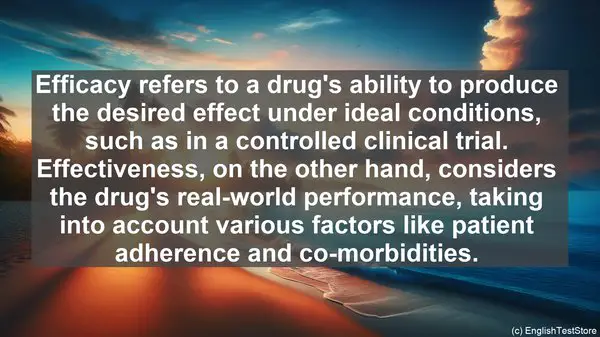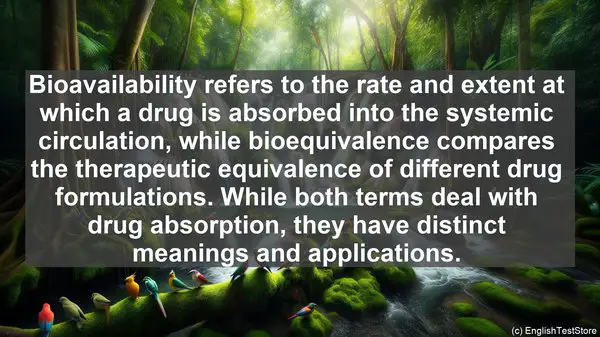Introduction
Welcome to today’s lesson. In the field of biopharmaceutics, there are several words that often cause confusion. Understanding these words correctly is crucial for effective communication and comprehension. So, let’s dive into the top 10 commonly confused words in biopharmaceutics.
1. Bioavailability vs. Bioequivalence
Bioavailability refers to the rate and extent at which a drug is absorbed into the systemic circulation, while bioequivalence compares the therapeutic equivalence of different drug formulations. While both terms deal with drug absorption, they have distinct meanings and applications.
2. Pharmacokinetics vs. Pharmacodynamics
Pharmacokinetics focuses on how the body processes a drug, including its absorption, distribution, metabolism, and excretion. On the other hand, pharmacodynamics examines the drug’s effects on the body and the underlying mechanisms. Understanding both aspects is crucial for comprehensive drug analysis.
3. Efficacy vs. Effectiveness
Efficacy refers to a drug’s ability to produce the desired effect under ideal conditions, such as in a controlled clinical trial. Effectiveness, on the other hand, considers the drug’s real-world performance, taking into account various factors like patient adherence and co-morbidities.
4. Generic vs. Brand Name
A generic drug is a medication that contains the same active ingredient as a brand-name drug, but it is usually cheaper. Brand-name drugs are developed and marketed by pharmaceutical companies. Both options have their advantages, and the choice depends on factors like cost and availability.
5. Adverse Effect vs. Side Effect
Adverse effects are unwanted and potentially harmful drug reactions that can range from mild to severe. Side effects, on the other hand, are usually less severe and often expected. It’s important to monitor and manage both types of effects to ensure patient safety.
6. Contraindication vs. Precaution
A contraindication is a situation where a drug should not be used due to the potential harm it may cause. A precaution, on the other hand, suggests that while the drug can be used, certain conditions or factors need to be considered to minimize risks.

7. Tolerance vs. Resistance
Tolerance refers to a reduced response to a drug over time, often requiring higher doses for the same effect. Resistance, on the other hand, occurs when a drug is no longer effective against a particular condition or pathogen. Both situations have implications for treatment strategies.

8. Synergistic vs. Additive Effect
A synergistic effect occurs when the combined action of two drugs is greater than the sum of their individual effects. An additive effect, on the other hand, is when the combined action is simply the sum of the individual effects. Understanding these interactions is crucial for drug combinations.
9. Therapeutic Index vs. Safety Margin
The therapeutic index is a measure of a drug’s safety and effectiveness. It compares the dose that produces the desired effect to the dose that causes toxicity. The safety margin, on the other hand, refers to the difference between the therapeutic dose and the toxic dose.
10. Placebo vs. Control
A placebo is an inactive substance given to a control group in a clinical trial to assess the true effects of the active drug. The control group, on the other hand, may receive an established treatment or no treatment at all. Both groups are essential for valid research results.
